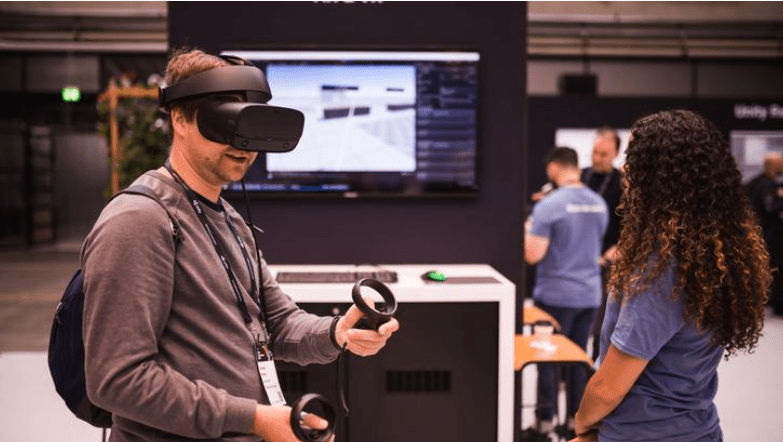As we continue to consume a tremendous amount of content in our daily lives, consumers in APAC are increasingly demanding more interactive and immersive experiences. In fact, IDC predicts the region’s spending on AR/VR solutions will reach US$14.8 billion by 2026, growing at a CAGR of 40.1%.
Marc Whitten, AVP and GM of Unity Technologies said, “To meet this fast-growing demand, Unity 6 – our next Long Term Support (LTS) release that is coming in 2024, will come with major performance enhancements and accelerated multiplayer game creation, as well as early access WebGPU support and deeper XR device support.”
Unity Technologies promotes interactive, real-time, and 3D (RT3D) content powered by a RT3D engine, and with Unity 6, creators in APAC will be able to leverage the advanced visuals to create larger, richer, more immersive worlds as efficiently as possible. This is good news not just for consumers but content creators like game developers, artists, architects, automotive designers, filmmakers and more.
These content creators can leverage the Unity platform’s comprehensive set of software solutions to create and operate real-time 2D and 3D content for multiple platforms, including mobile phones, tablets, PCs, consoles, and augmented and virtual reality devices.
Marc said, “Central to our business philosophy is the belief that the world is enhanced by a greater number of creators, and by furnishing them with a user-friendly and robust platform we aim to democratize game development making it accessible to individuals of all skill levels and backgrounds.”

Marc Whitten, Unity

Unity’s solutions can be found in a variety of industries that require immersive, interactive, and real-time 3D content, the likes of retail, manufacturing, and aerospace.
“Our product suite offers content creators the tools to fashion innovative RT3D experiences and optimizing operational processes.”
Delightful Simulations
Interactive digital twins are replications of physical products and they present opportunities to enhance processes and workflows across the entire business spectrum, spanning from R&D to operational phases.
Besides being used to describe content that is immersive, RT3D is a computer graphics technology capable of generating interactive content at a pace surpassing human perception.
When this capability powers a digital simulation, what happens is the organization and curation of multiple data sources (both informational and model-based) to present them as vivid, and interactive visualizations.
Unity’s solutions can be found in a variety of industries that require immersive, interactive, and real-time 3D content, the likes of retail, manufacturing, and aerospace.
This enables users to engage with three-dimensional, responsive content in real-time. Within this virtual environment, they can effectively simulate real-world conditions, explore what-if scenarios, and envision outcomes instantly on various platforms, including mobile devices, computers, and augmented, mixed, and virtual reality (AR/MR/VR) devices, said Marc.

“This accuracy is vital for R&D, where precision is often required in understanding and analyzing complex systems thereby allowing researchers to gain a holistic view of the R&D processes, identifying bottlenecks, optimizing workflows, and making informed decisions based on a comprehensive understanding of the data.”
Unity believes that as digital twin capabilities mature, additional benefits include reduced maintenance costs, well-informed decisions regarding process changes with significant potential savings, and enhancements in maintenance and operational efficiency.
Without RT3D, Industries such as gaming, architecture, healthcare, and education would face limitations in visualizing and simulating complex scenarios, hindering progress in fields where realistic and interactive representations are paramount.
To that end, strategic collaborations with hardware partners like Apple, ensure the best possible experience for Unity users across a diverse array of devices and platforms.
Partnerships for Great User Experiences
Deckers Brands, turned to Unity to tackle the challenge of optimizing and future-proofing a footwear manufacturing workflow throughout all global operations.
Leveraging RestAR’s 3D technology to scan and render physical consumer products in high-quality 3D, Deckers successfully streamlined prototyping, design review, and sample production, resulting in significant savings in terms of:
- time (high-definition scans in hours instead of days)
- money (80% cost reduction in 3D scans)
- materials (eliminating need for physical samples)
- labor, and
- CO2 emissions
Marc also shared that in the automotive industry, digital twins are transforming the production and driving experience, from Hyundai’s groundbreaking meta-factory in Singapore that automates an entire production line of car creation to Mercedes building the UI for its in-car cockpit with everything from 3D navigation software to mixed-reality experiences using the car’s smart glass.
Improved conversions
There’s no stopping the future. Consumers, both in APAC and globally, are seeking more immersive retail and commerce experiences.
Marc said, “At Unity, we have been delivering industry solutions to help our customers in retail, sales and marketing build real-time 3D digital twins, including virtual showrooms and stores, brand gamification and 3D product configurators. What we see about experiences powered by real-time 3D is that consumers are absolutely delighted by them.
According to him also, these experiences improve conversions, as shoppers prefer 3D over watching a video, and it gives shoppers more confidence in their purchases.
“Once these are experienced, there’s no going back. Through these immersive and interactive assets, marketers can elevate consumer experiences, bridge the gap between in-person and online shopping, as well as drive engagement and conversion,” Marc concluded.




